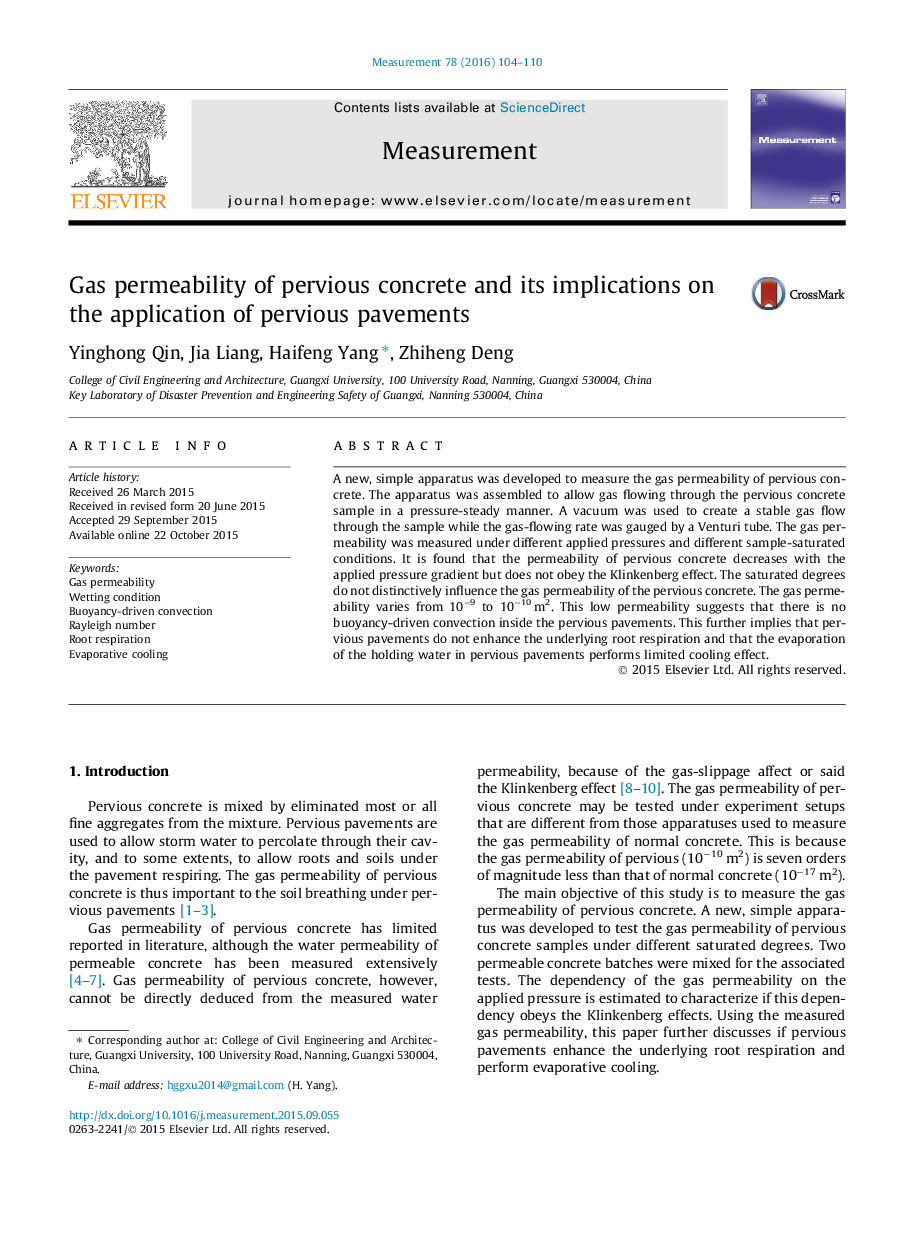| کد مقاله | کد نشریه | سال انتشار | مقاله انگلیسی | نسخه تمام متن |
|---|---|---|---|---|
| 727211 | 1461509 | 2016 | 7 صفحه PDF | دانلود رایگان |
• A new apparatus is designed to measure the gas permeability of pervious concrete.
• Typical pervious concrete has gas permeability of 10−9–10−10 m2.
• Pervious pavements do not enhance the underlying root respiration.
• Pervious pavements perform limited cooling effects when their surfaces are dry.
A new, simple apparatus was developed to measure the gas permeability of pervious concrete. The apparatus was assembled to allow gas flowing through the pervious concrete sample in a pressure-steady manner. A vacuum was used to create a stable gas flow through the sample while the gas-flowing rate was gauged by a Venturi tube. The gas permeability was measured under different applied pressures and different sample-saturated conditions. It is found that the permeability of pervious concrete decreases with the applied pressure gradient but does not obey the Klinkenberg effect. The saturated degrees do not distinctively influence the gas permeability of the pervious concrete. The gas permeability varies from 10−9 to 10−10 m2. This low permeability suggests that there is no buoyancy-driven convection inside the pervious pavements. This further implies that pervious pavements do not enhance the underlying root respiration and that the evaporation of the holding water in pervious pavements performs limited cooling effect.
Journal: Measurement - Volume 78, January 2016, Pages 104–110
